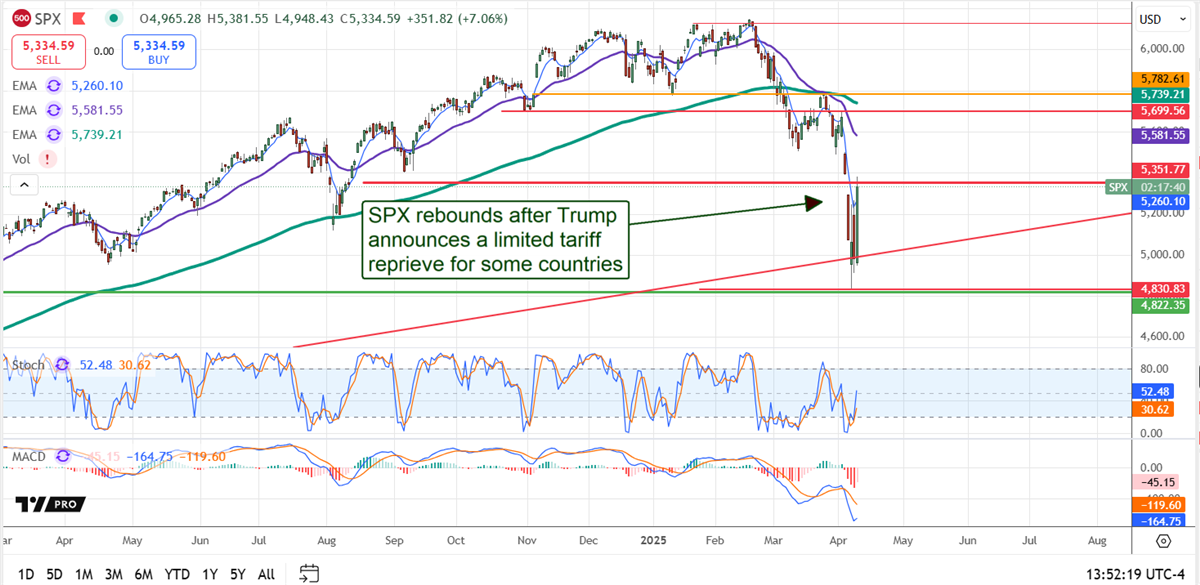Delta Air Lines (NYSE:DAL) and Walmart (NYSE:WMT) got the market’s attention by cutting their profit forecasts.
The critical factor is tariff uncertainty and its impact on demand, and these companies will not be the last to lower their guidance.
With tariffs now in effect and retaliation as the primary response, not only will other companies follow suit, but also a persistent cycle of guidance reduction could ensue. The market, as represented by the S&P 500, could fall significantly as the domino effect gains momentum quarterly.
And the S&P 500 is already in a negative revision cycle—a cycle that is pressuring the market lower.
While the forecasts are for growth and sequential acceleration in 2025, the estimates have fallen drastically. The consensus for Q1 is running near 7%, about 50% below its peak, while the forecast for the year is down about 400 basis points and likely to continue falling as the year progresses.
The risk is that the outlook for earnings will fall into negative territory, leading the market into a protracted downtrend that could last many quarters.
Front-Half Outperformance, Followed by Terrible Back-Half Guidance
The caveat is that economic conditions and corporate earnings remain strong and have yet to show the impact of DOGE job cuts or tariffs.
While Delta and Walmart cut profit targets and increased uncertainty, they both guided for solid Q2 performance, and the odds are high that most companies will follow suit. Walmart’s CEO also highlighted the company’s tendency to come out of times of economic turmoil with increased market share, so its long-term success is all but assured.
The tariffs have been a threat telegraphed for weeks, if not months, providing ample time for consumers and businesses to front-run the impact. This has the S&P 500 set up for outperformance in Q2, but there is a downside.
The more of a boost the S&P 500 gets from the front run, the more significant the decline once tariffs take full effect, and the longer it will be until market normalization. The last time S&P 500 companies front-ran a supply chain fiasco was in 2021-2022 and it still impacts some markets today.
The takeaway is that corporate earnings may not reflect the impact of tariffs until the CQ3 earnings reporting cycle or later, but when they do, the effect could be severe.
Energy Companies Face Massive Earnings Decline in 2025
The energy sector will be among the sectors hardest hit.
The price of West Texas Intermediate (WTI) is cratering due to fears of stagnating economic activity globally, compounded by years of ramping Western production and ample supply. The likely outcome is that WTI will remain under pressure and could revert to its pre-COVID trading range in the mid-$50s, sapping revenue and earnings leverage for oil producers but lowering costs for businesses and consumers and alleviating inflationary pressures.
The difference between the energy sector and the S&P at large is that oil prices are down now, early in CQ2, and will impact guidance and results as soon as the current quarter. The sector was expected to post earnings contraction in the first half of 2025 and then revert to growth in the back; now, the likely results are weaker-than-expected front-half growth and a decline in the back half and for the year.
Volatility Is The Only Certainty
With as much risk as Trump has brought to the market, the only certainty is volatility, as evidenced by the April 9th S&P 500 price swing. First down significantly on mounting tariff fears and escalating responses from China, the market reversed midday to advance nearly 7% by early afternoon, closing up over 9%.
Why? Trump postponed tariffs for some countries but not all, relieving some fear and increasing uncertainty. Even so, the odds are high that guidance will be reduced as the year progresses, keeping the index price action under pressure.

